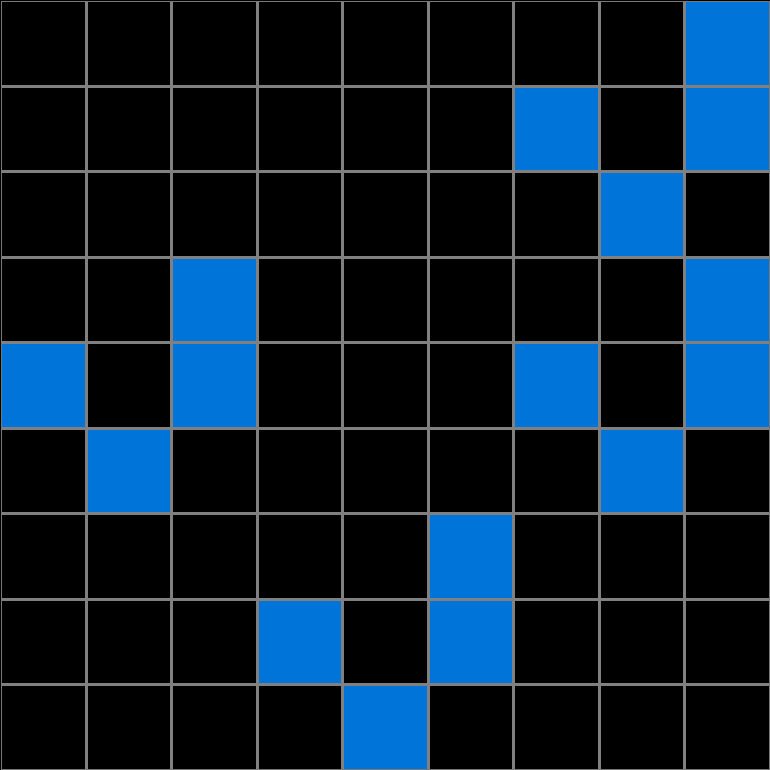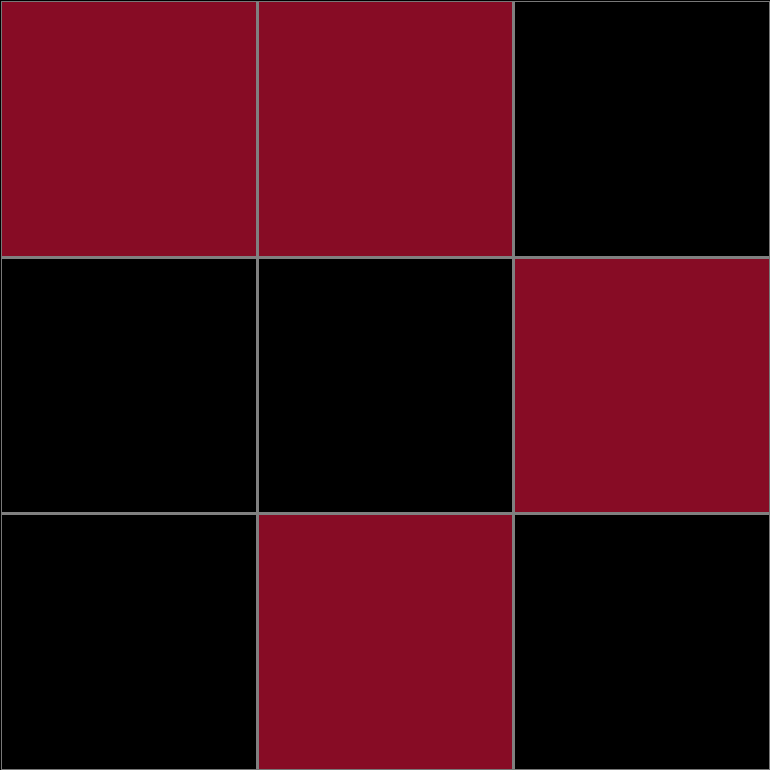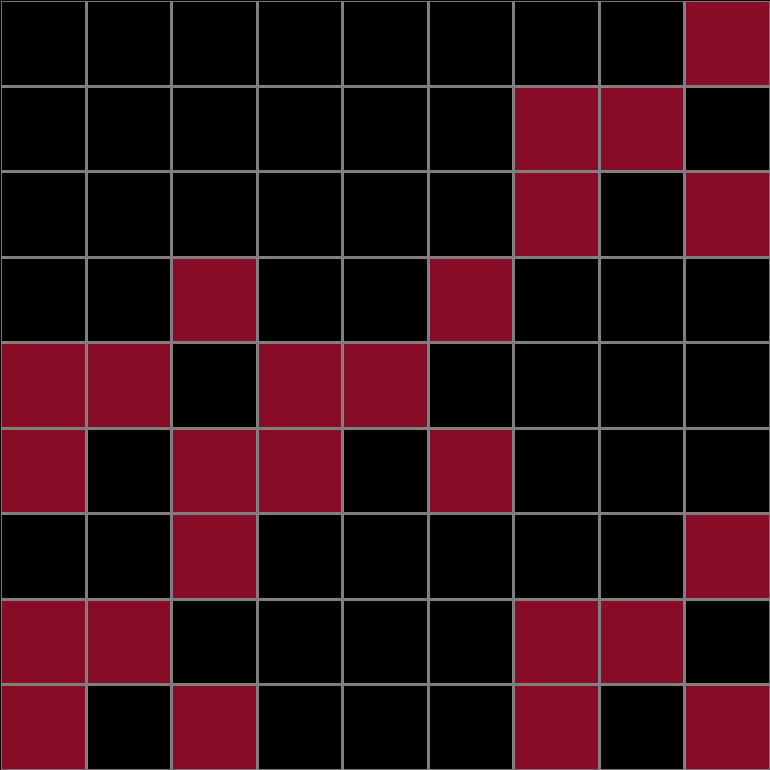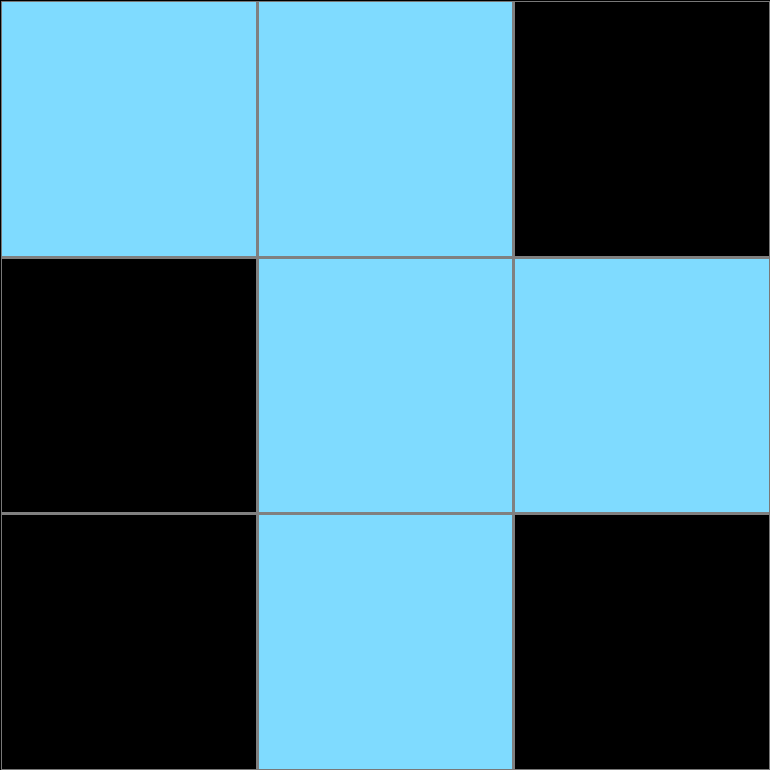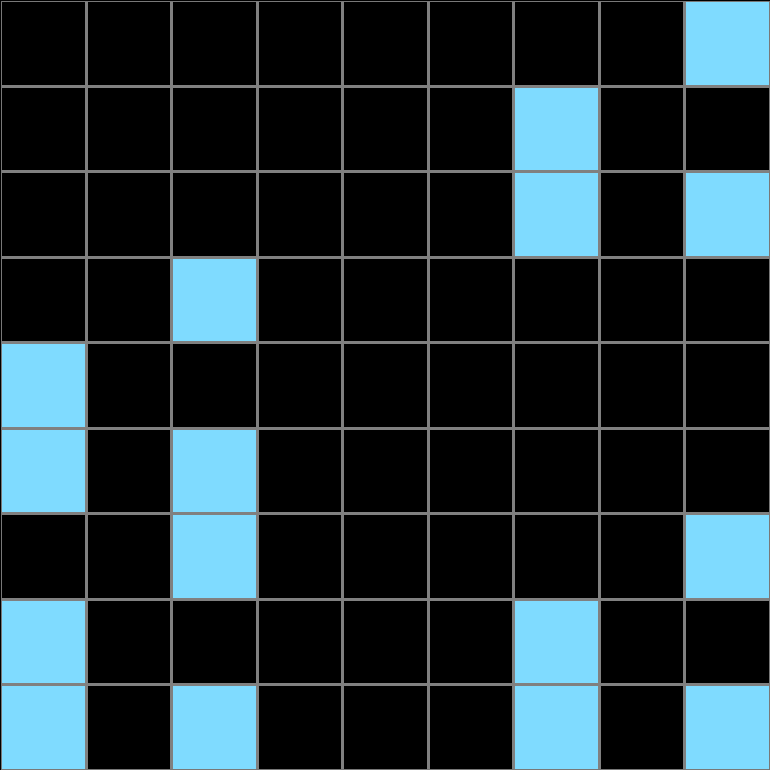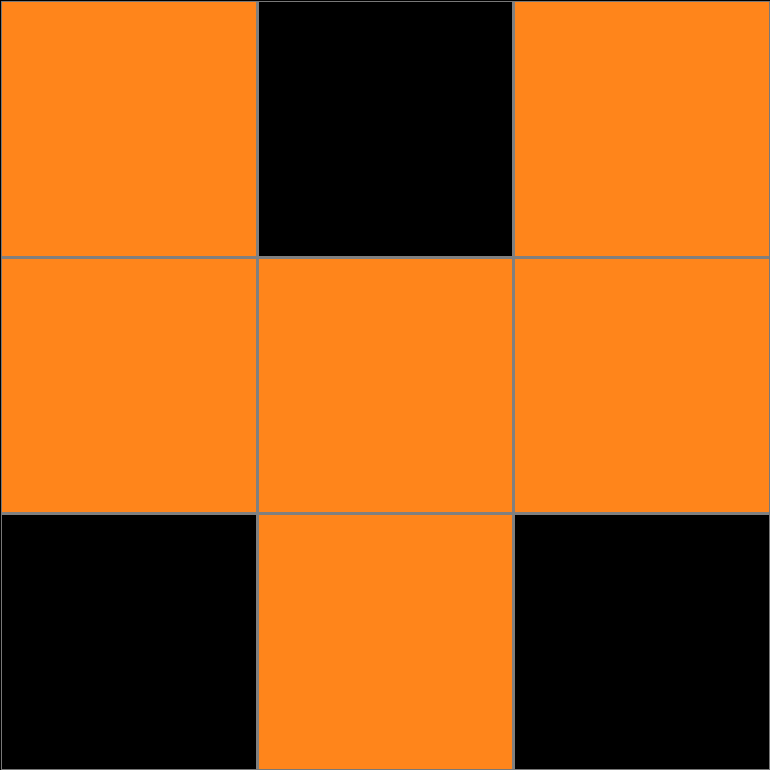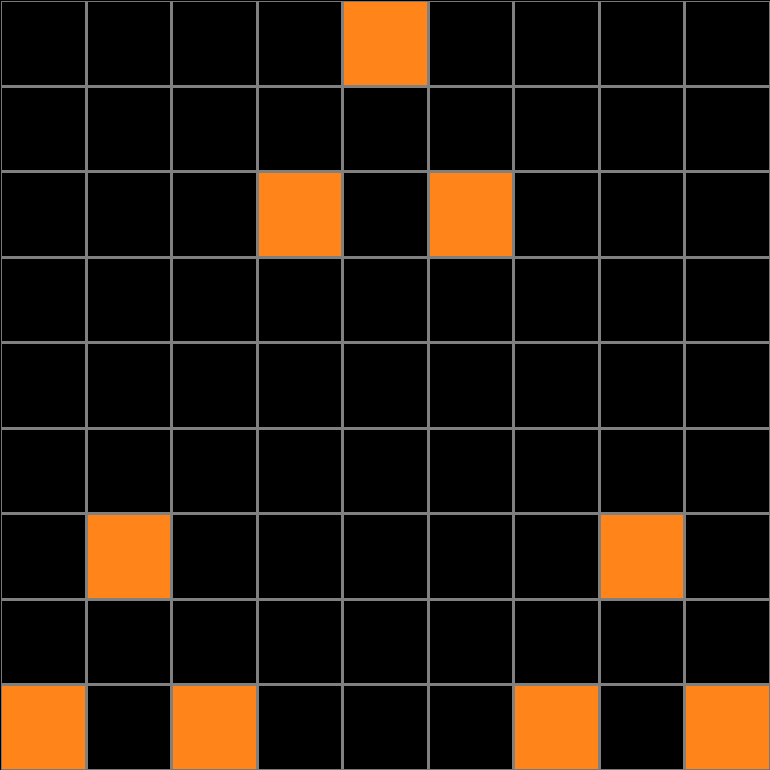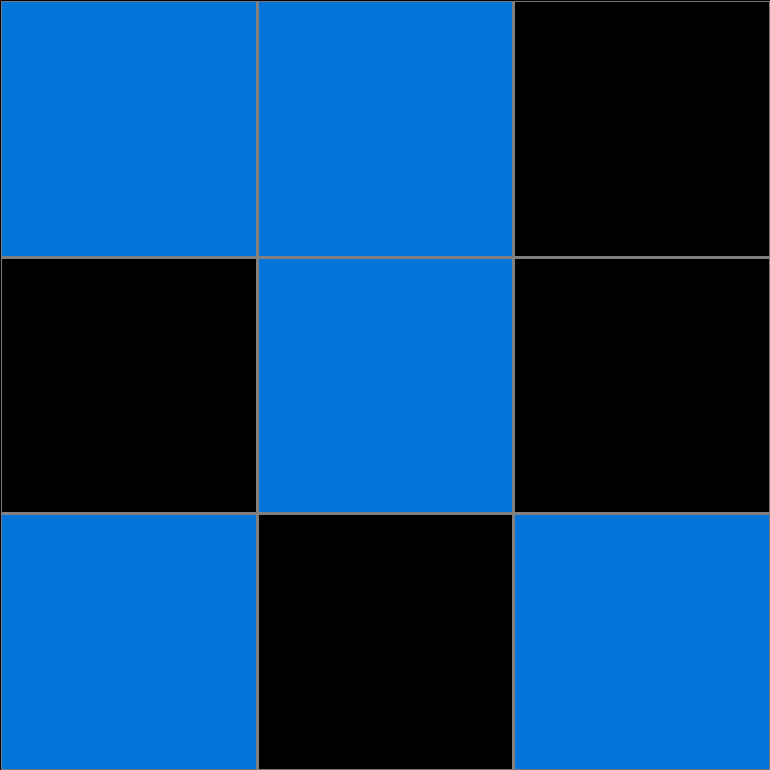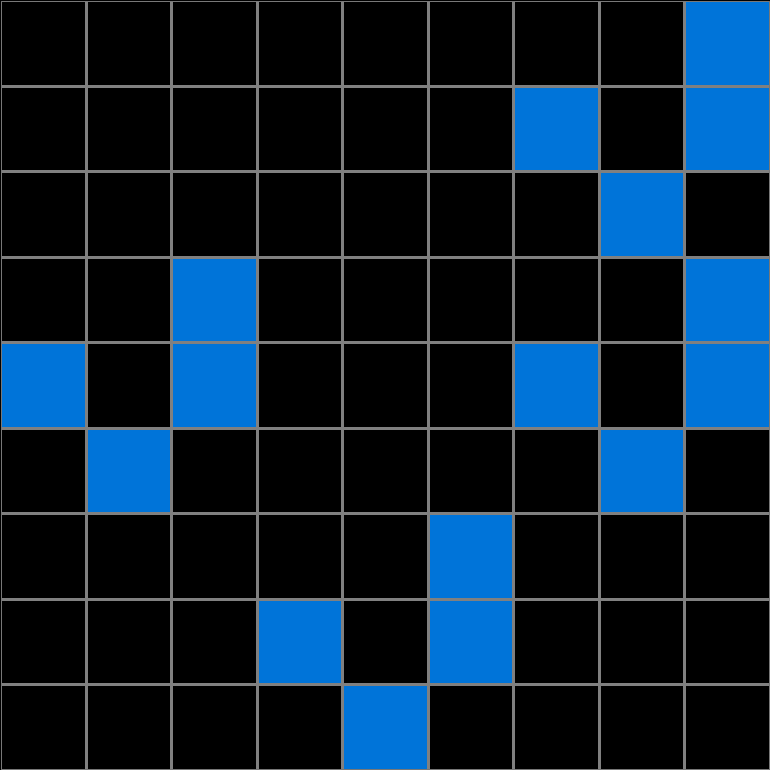Participant 1
Initial description: Copy the bigger image and break it into smaller pieces in opposed colors.
Final description: Copy the bigger image and break it into smaller pieces in opposed colors.
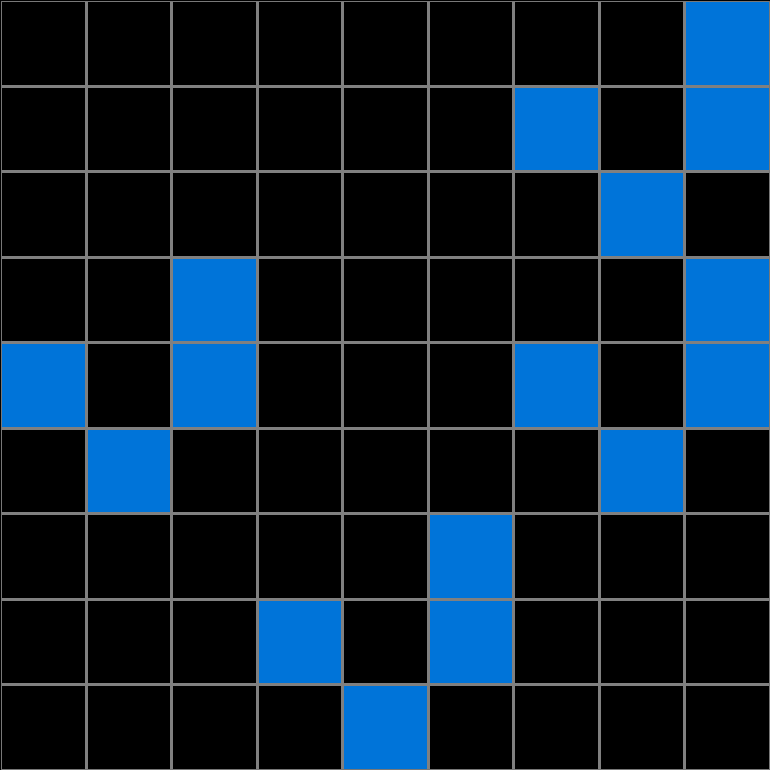
Participant 2
Initial description: Increase the grid to 9 x 9 and set the opposite color pattern in each corner
Final description: Repeat the pattern of opposite colors to fill in the whole grid


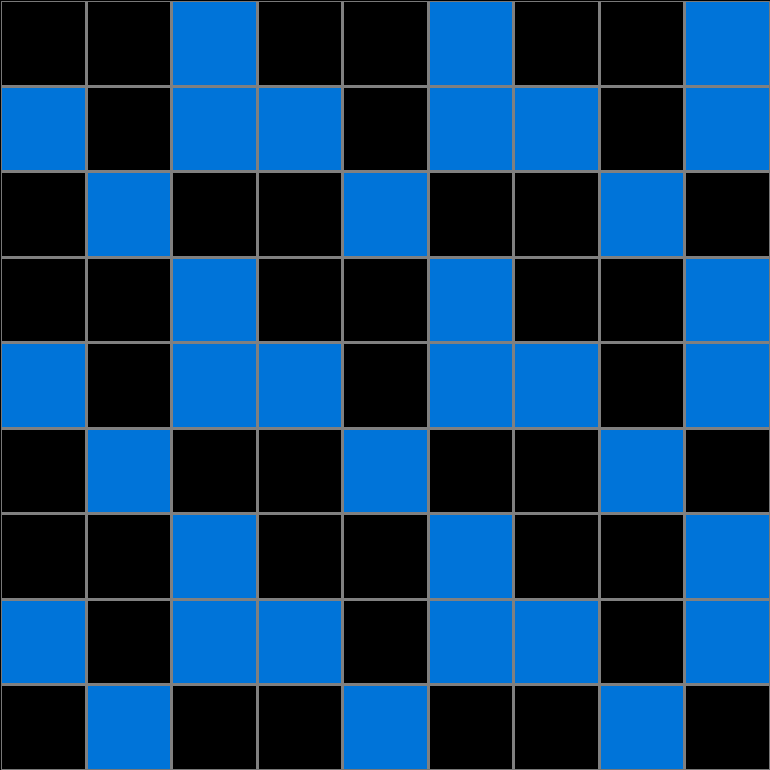
Participant 3
Initial description: I thought that the image would be the negative in the corresponding areas as used in Example 2
Final description: I thought the rule was to follow the Examples and place the corresponding 3x3 blocks in that order but the colors would switch to negative.
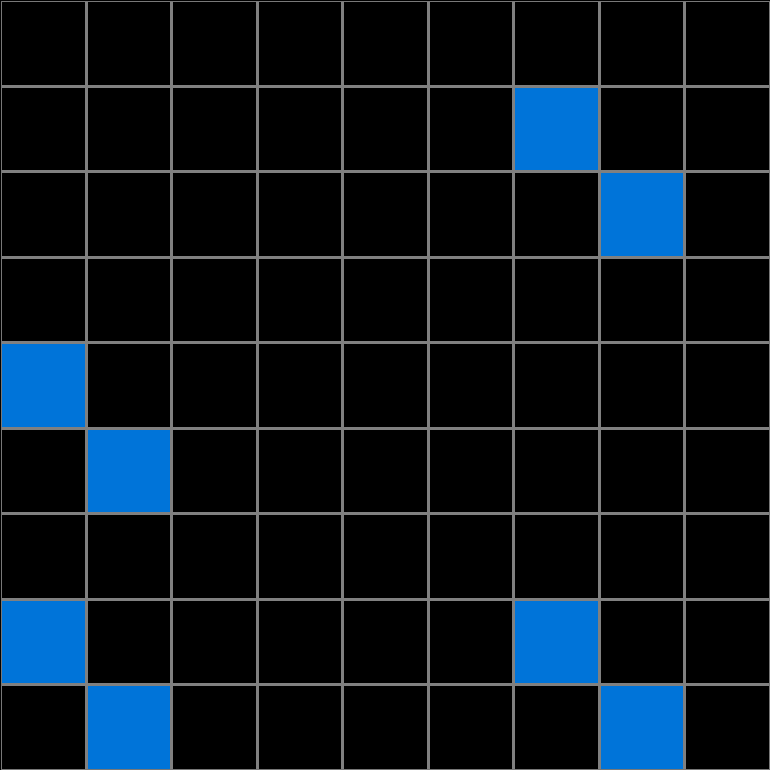


Participant 4
Initial description: Make the output 9x9. Replace the black squares with blue color.
Final description: Put blue color instead of the black color. The number of pattern reduces from 5 to 3 so the next one should be 2 but I don't know where to put it in the grid.
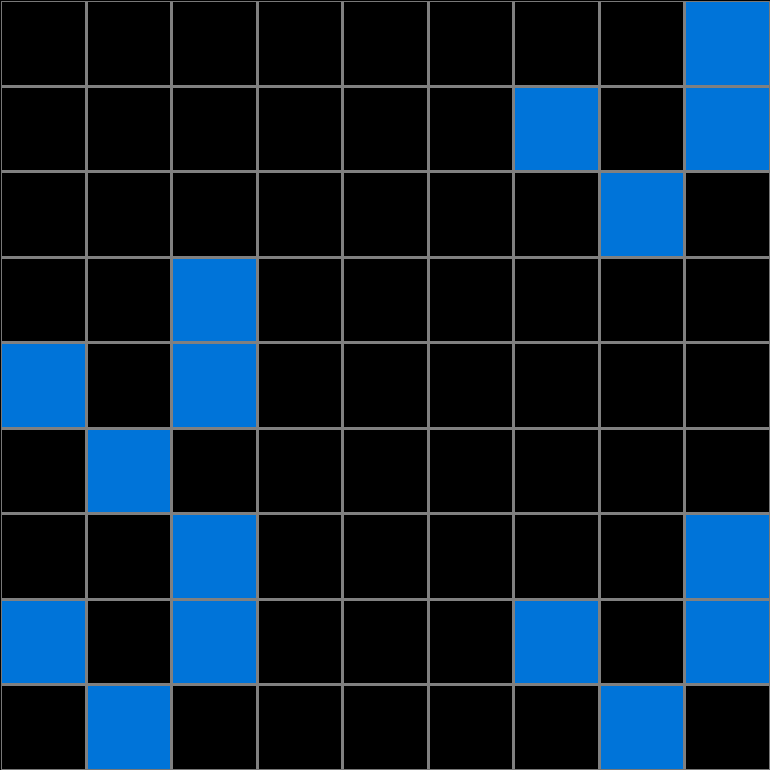
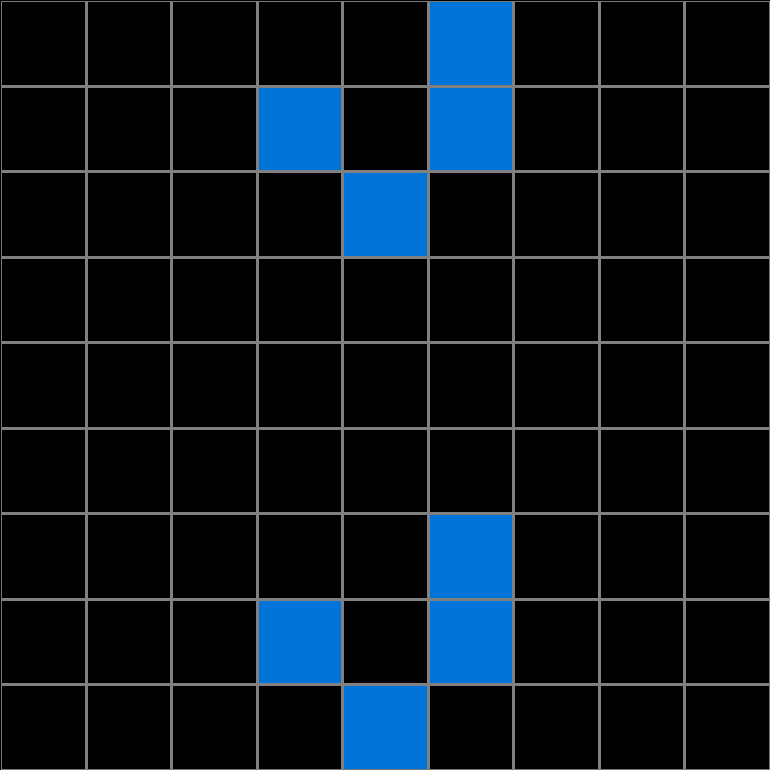

Participant 5
Initial description: Create a 9 x 9 grid. Using the Test Input colors, create (3) of the same 3 x 3 squares, only upside down and backwards. Place one in each bottom corner of the 9 x 9 grid, and one centered along the top.
Final description: I could not figure this one out. I think the test input needs to have the colors reversed and then laid out multiple times into the 9 x 9 grid.
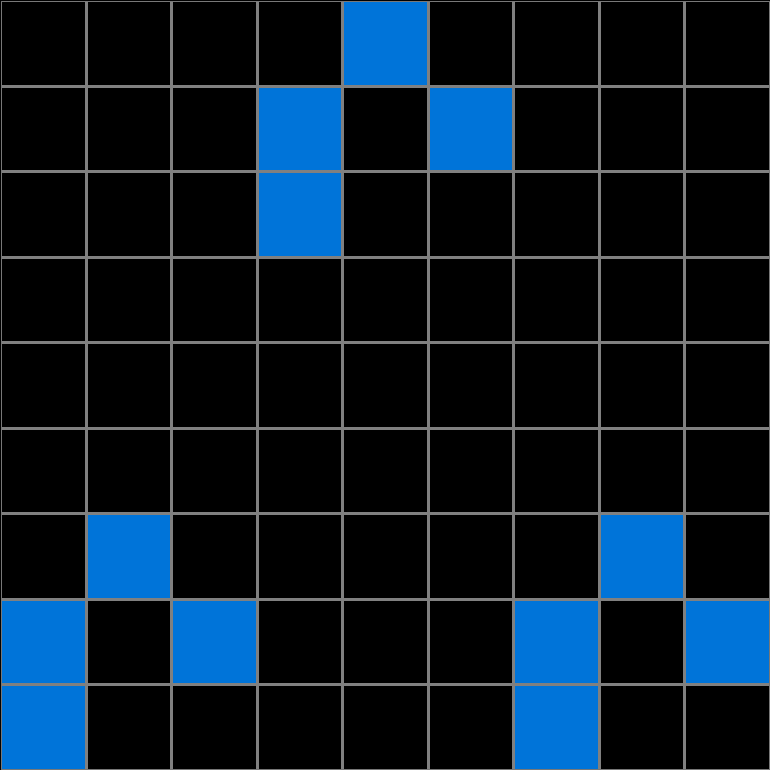
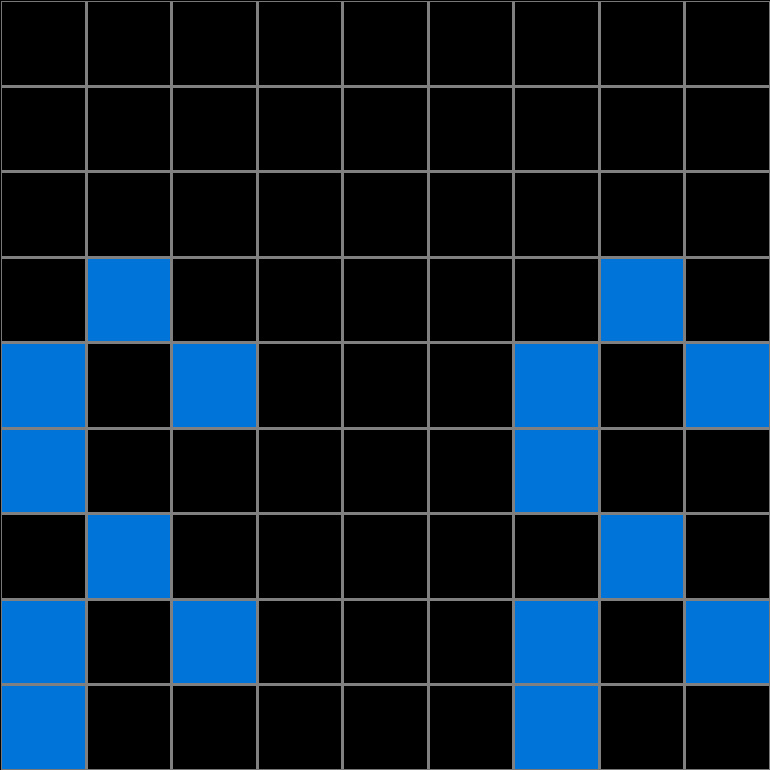
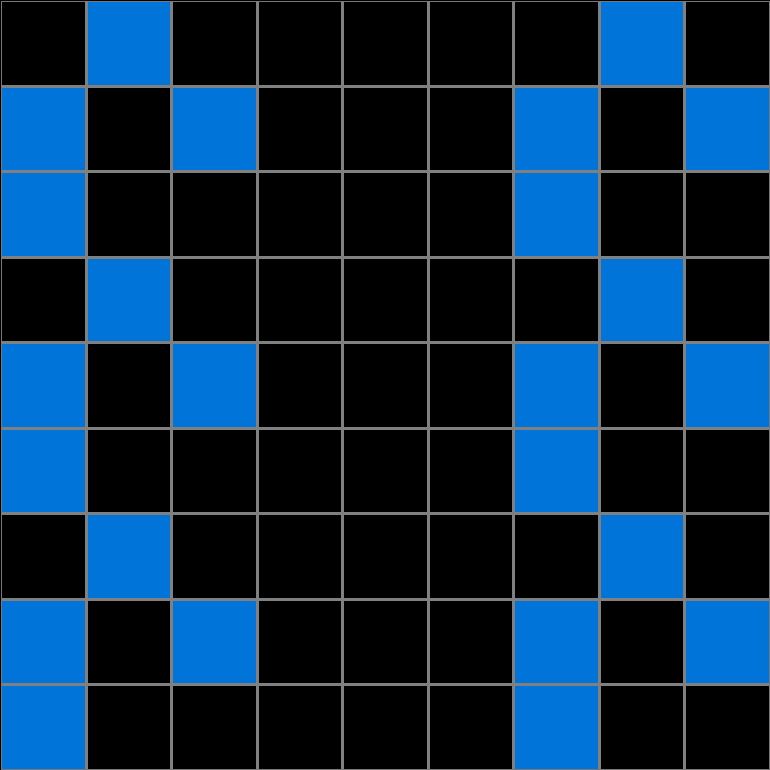
Participant 6
Initial description: The colors are opposite repeating the same pattern over and over.
Final description: Opposite colors are used in a pattern that repeats three times with one at the top and two at the bottom.
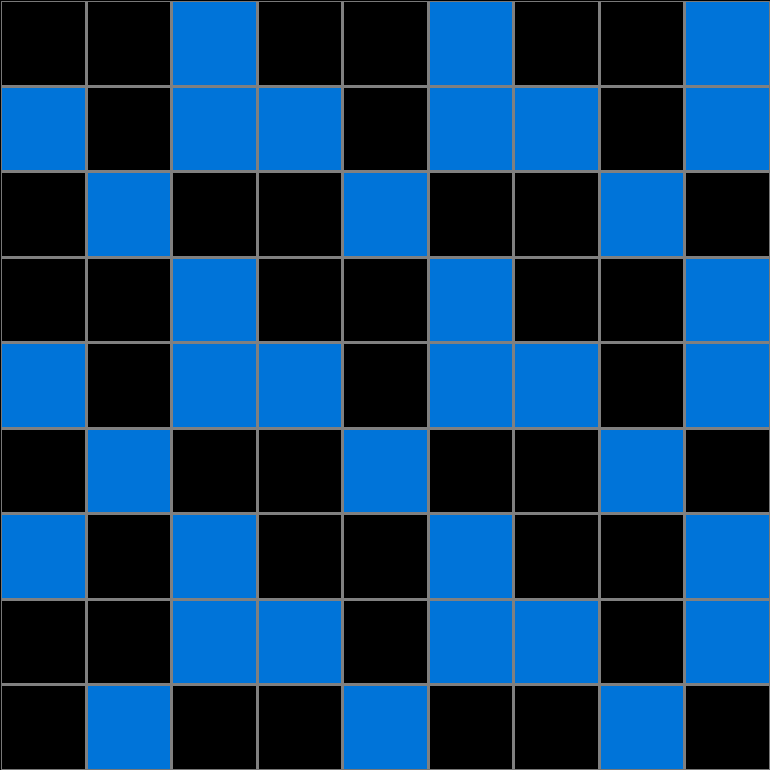
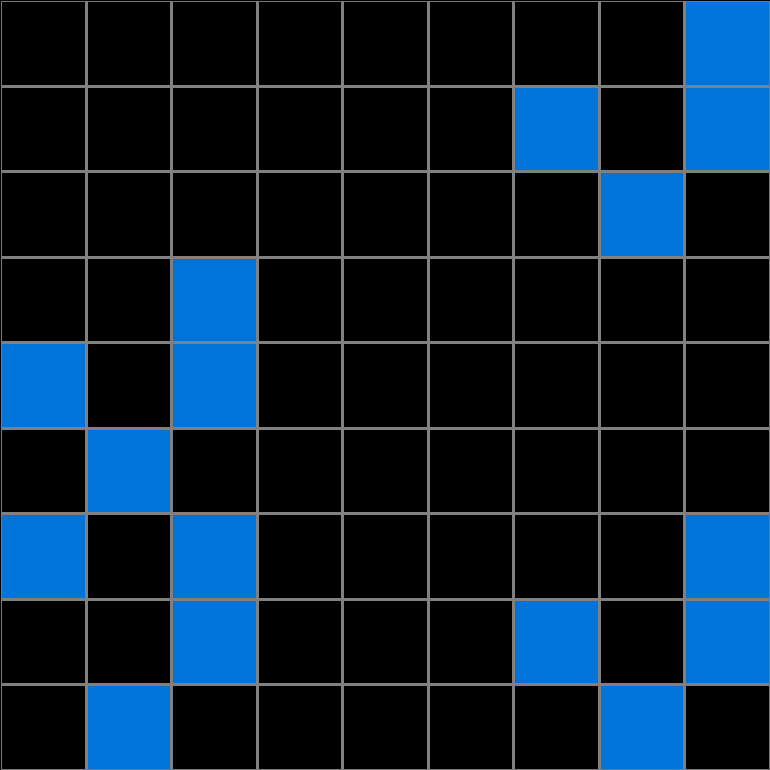
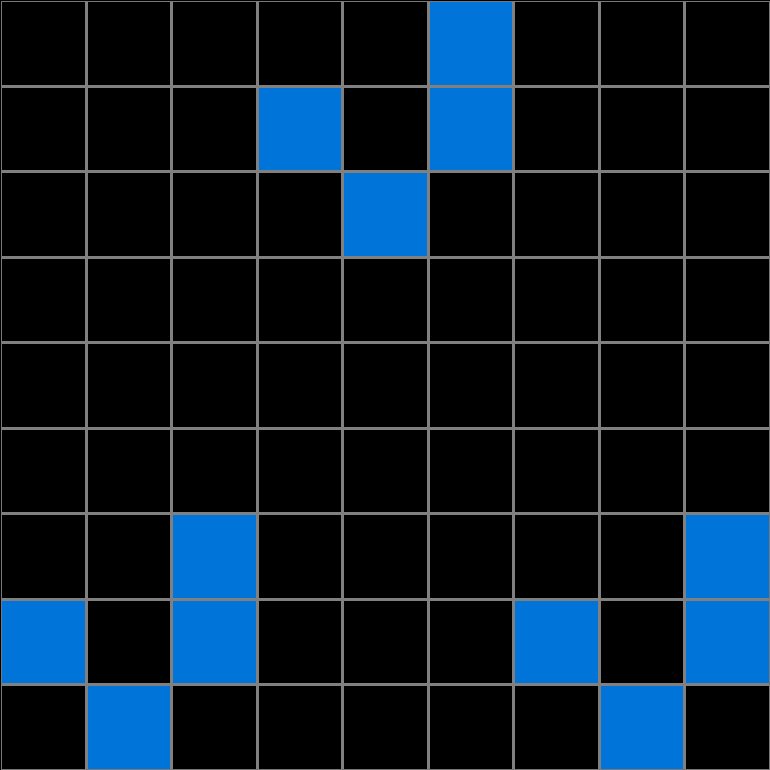
Participant 7
Initial description: color 4 squares in 4 columns in the first, third, seventh and ninth column
Final description: Put four squares in 4 locations


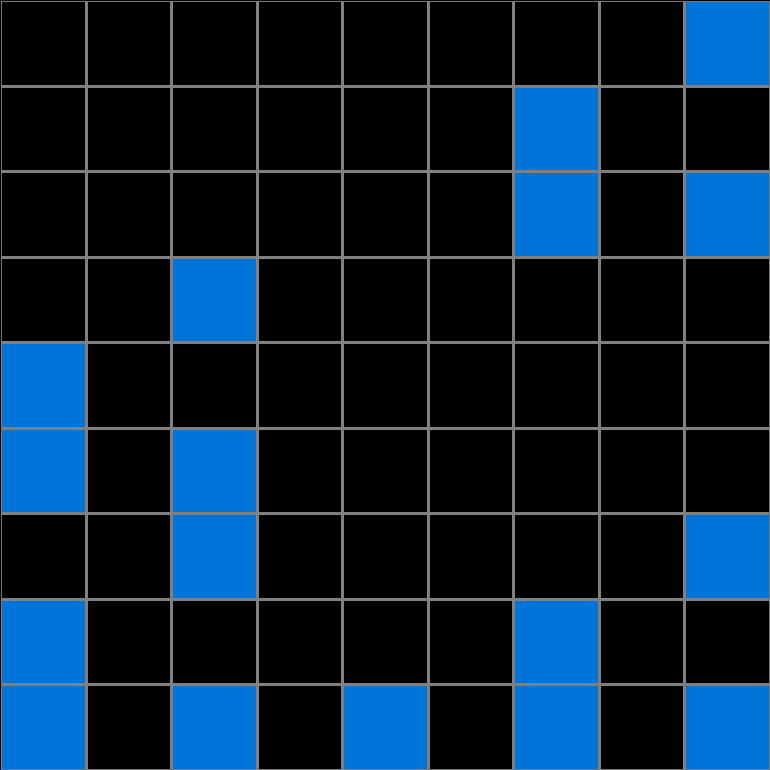
Participant 8
Initial description: Observing the examples, the rule seems to be based on the number of black squares present in the example input. That is the number of times the pattern repeats in the output. In the output, the colored squares and the black squares switch places. The placement of the patterns in the 9x9 grid in the output is based on the example with the four black squares, as the test input also had four black squares.
Final description: Observing the examples, the rule seems to be based on the number of black squares present in the example input. That is the number of times the pattern repeats in the output. In the output, the colored squares and the black squares switch places. The placement of the patterns, I realized after my first incorrect attempt, are based on where the locations of the black squares are in the test input, and just taking the 3 3x3 grids in the 9x9 test output, placing the pattern in the corresponding places.

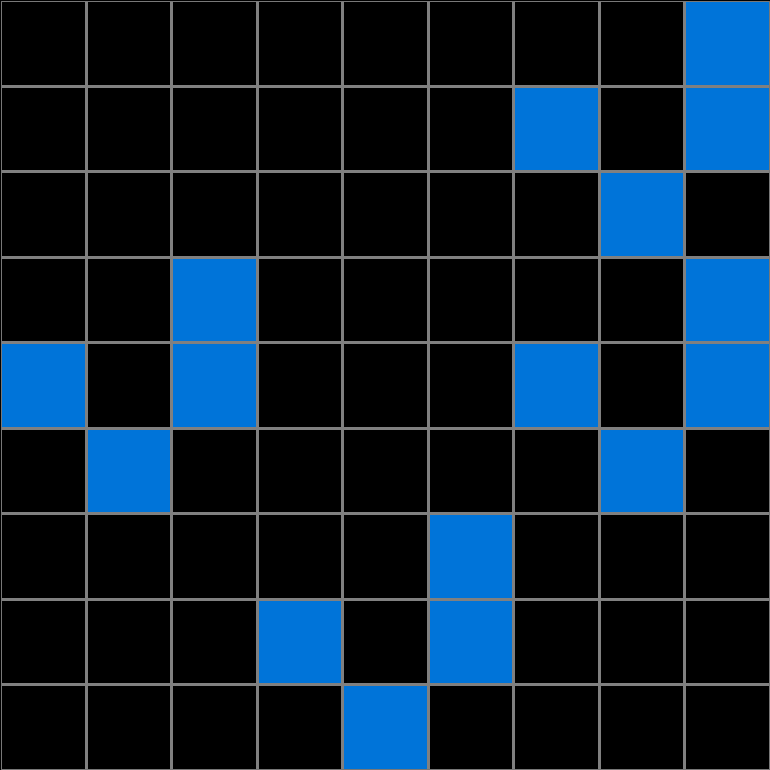
Participant 9
Initial description: switch colors and use pattern on right example
Final description: invert color and place on grid using examples
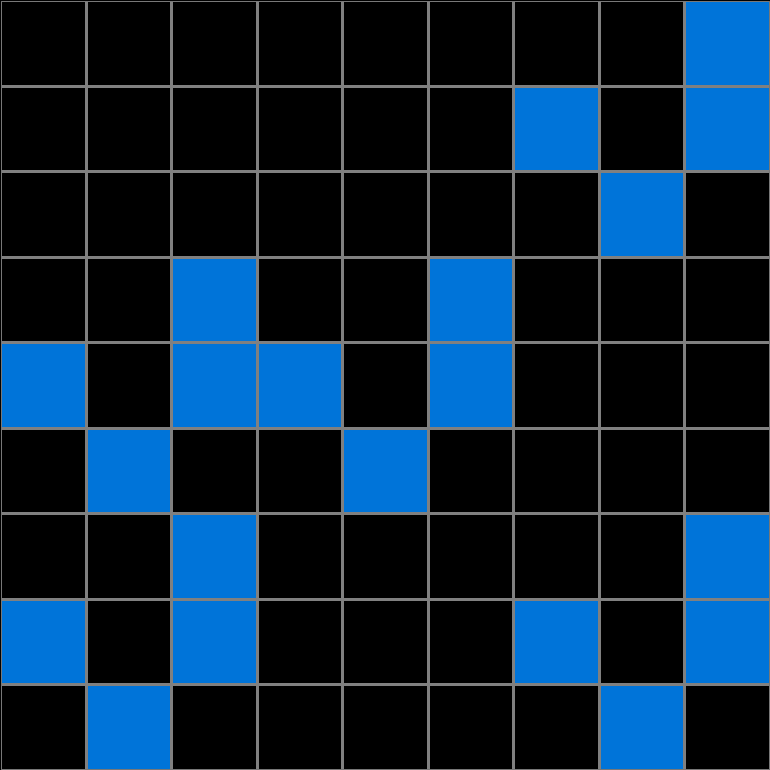
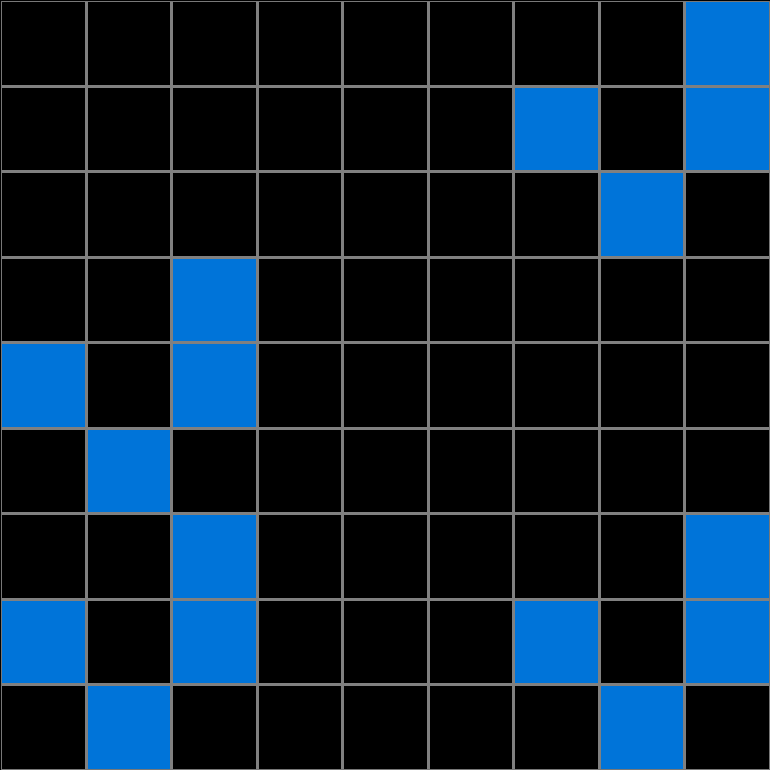

Participant 10
Initial description: I have to create the pattern shown in black in the test input on the output part. I have to create this pattern the number of times that correspond to the number of black spaces in the test input.
Final description: I have to create the pattern shown in black in the test input on the output part. I have to create this pattern the number of times that correspond to the number of black spaces in the test input.

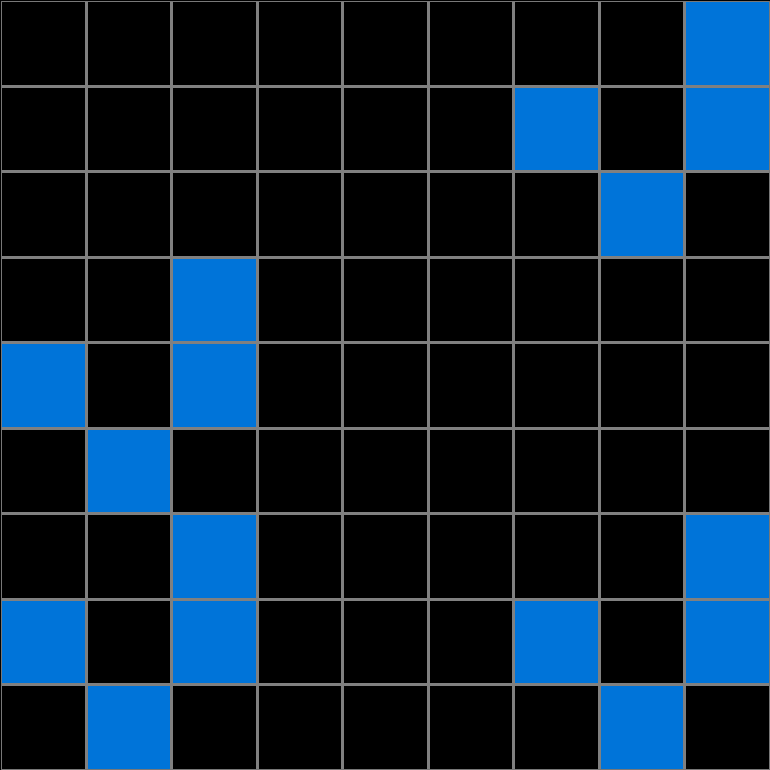

Participant 11
Initial description: used example 2
Final description: Tried all examples

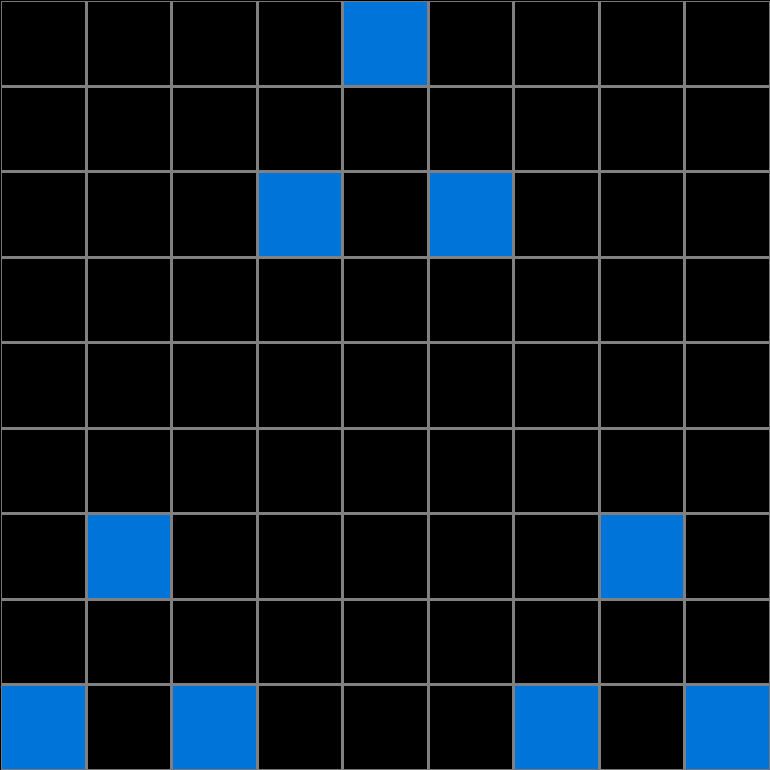

Participant 12
Initial description: 2 color boxes and then one black box 1 color box and 2 black boxes 2 color boxes and the one black box
Final description: The example input is 3x3 and the output is 9x9. For every box in the input, the output has to be the opposite. So if the box in the input is black, then the 3x3 box in the output must be the opposite. If the box in the input is colored, then the output box is all black
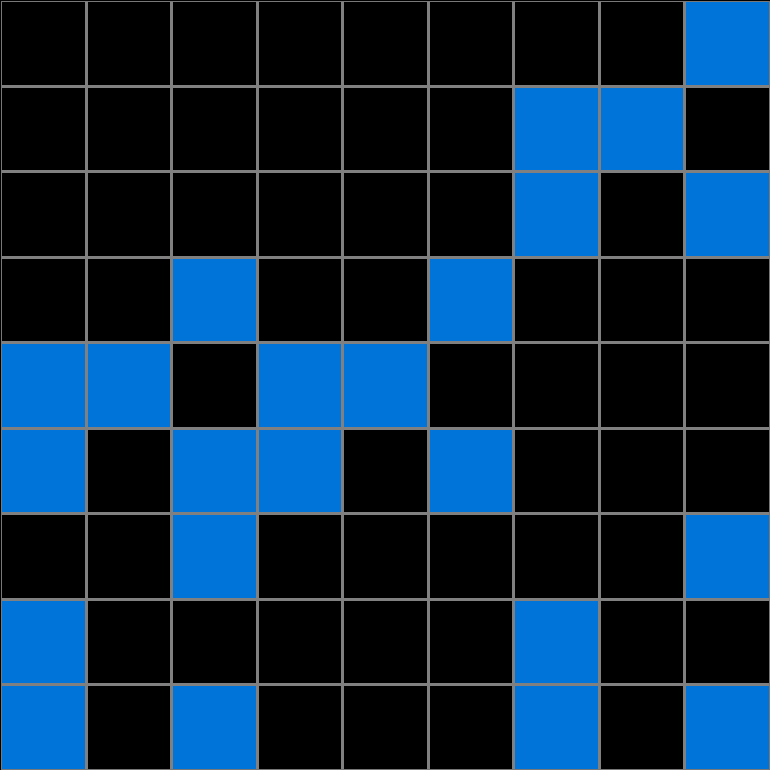
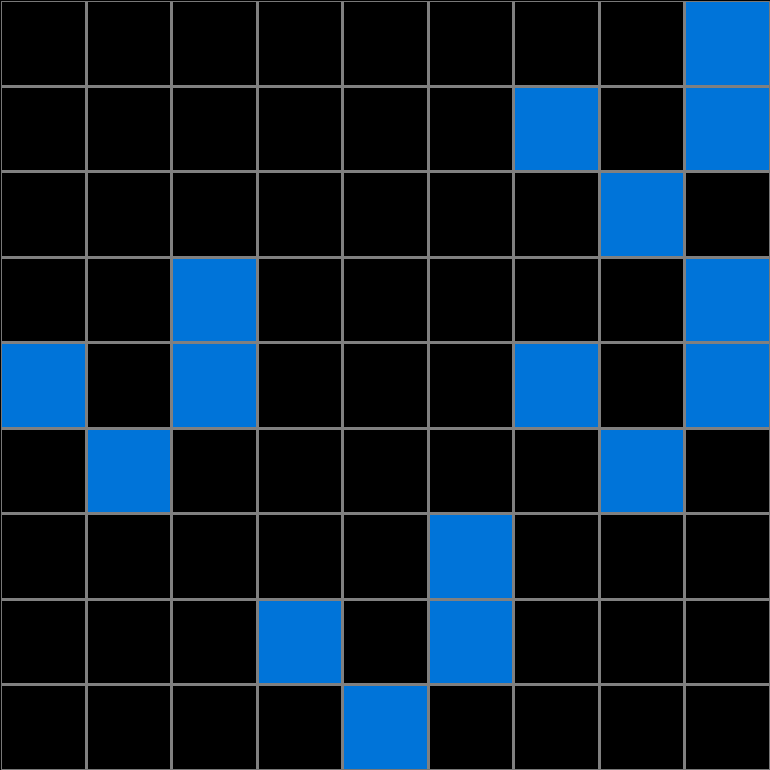
Participant 13
Initial description: Reverse the colors and imitate the pattern on the example inputs.
Final description: Reverse the colors and form an even pattern on the board.
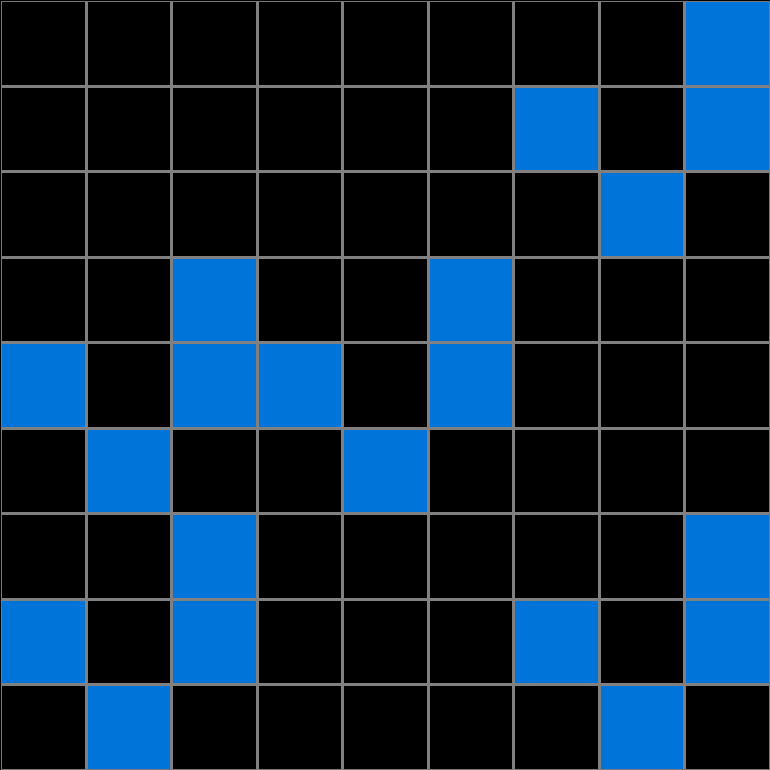
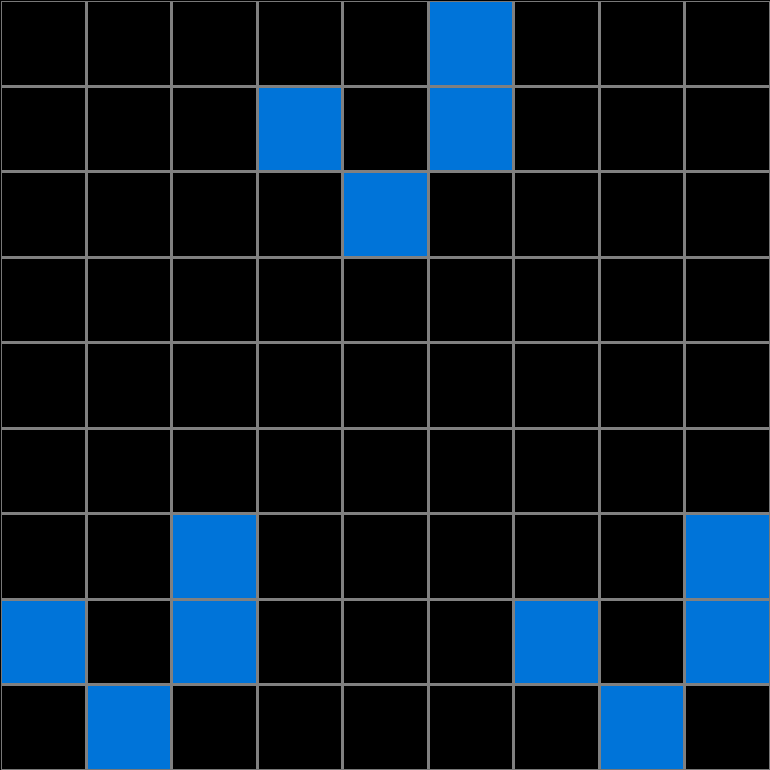
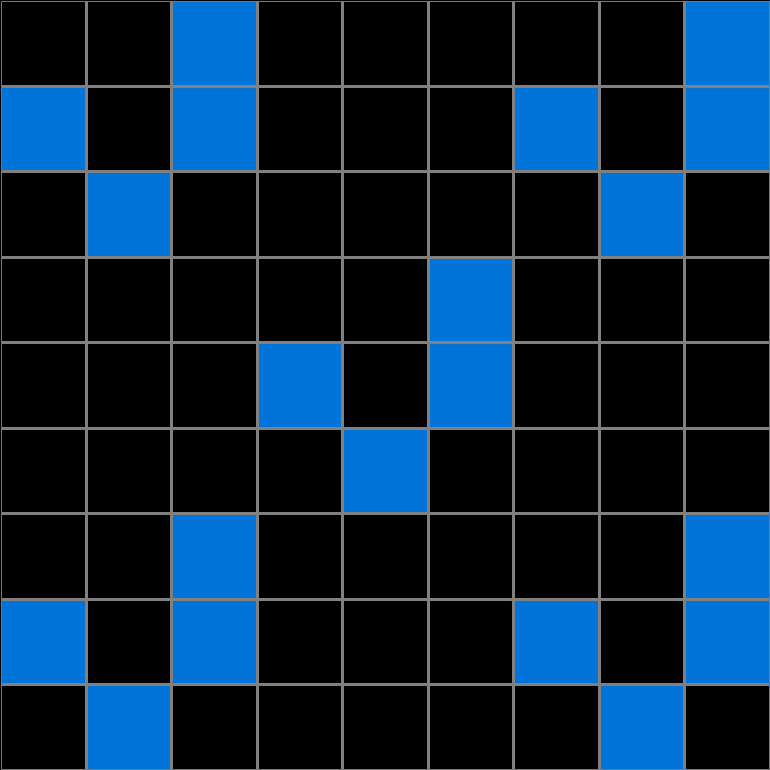
Participant 14
Initial description: I tried to follow the input example 3 in order to make a larger grid and follow the color scheme
Final description: I thought I had to replicate the color scheme of the initial input and repeat it four times around the larger grid.
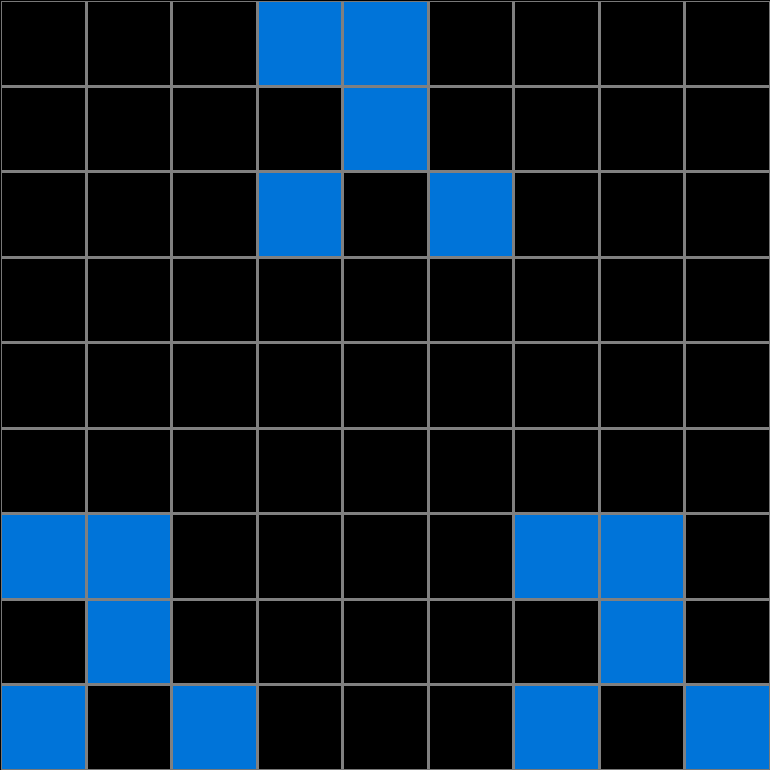
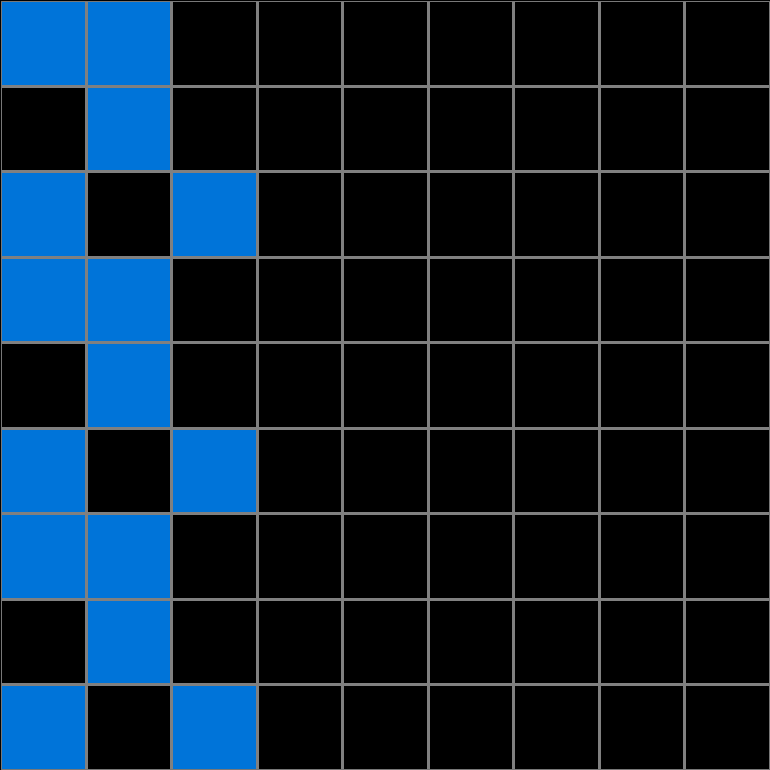

Participant 15
Initial description: Convert 3x3 to 9x9. The number of black boxes in the Test Input will determine how many times and in what particular 3x3 sections of the 9x9 grid will be utilized. The rest will remain blank(black). For each 3x3 section that is utilized, the rule is to invert the color pattern from the Test Input.
Final description: Convert 3x3 to 9x9 grid. The number of black squares in the Test Input will dictate how many individual 3x3 grids on the 9x9 grid will be utilized. Each 3x3 will be determined by where on the 3x3 grid each black box is. In other words, the 1x1 black box on the 3x3 is representative of a 3x3 grid on the new 9x9 grid. For each 3x3 grid that is filled in, the rule is to invert the colors on the Test Input.

